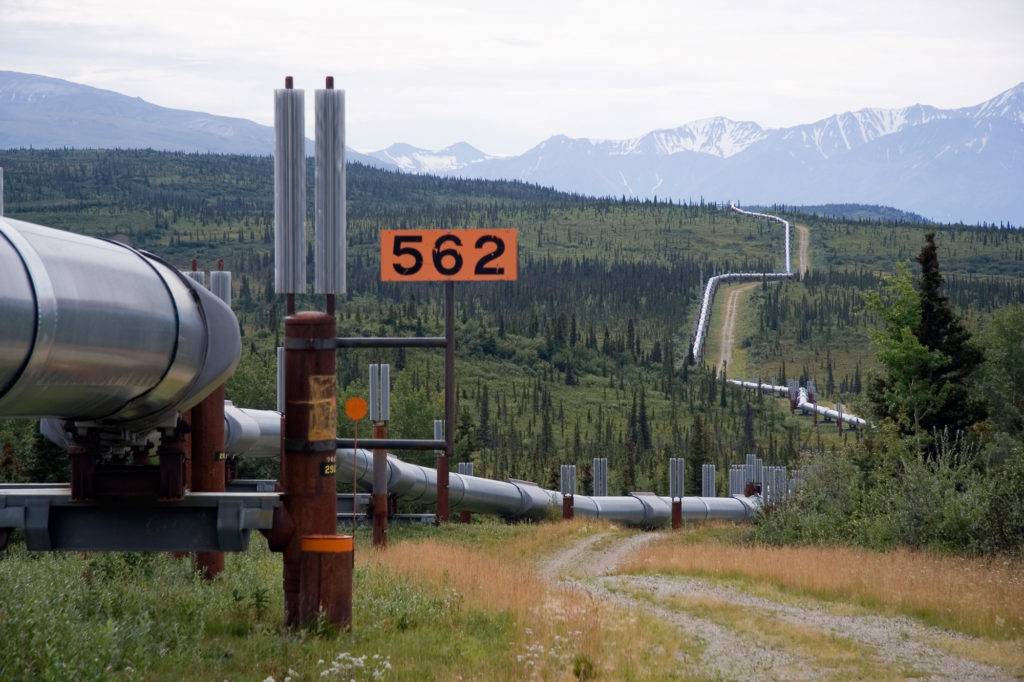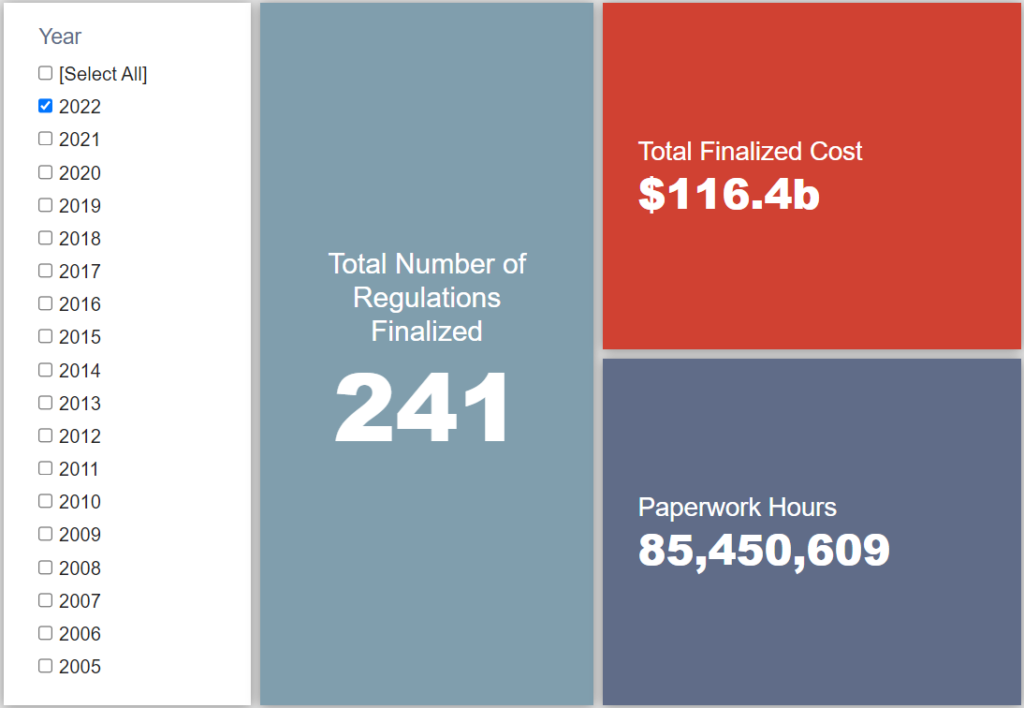Week in Regulation
December 5, 2022
Steady Stream of Rules Flowing Through the Pipeline
Last week was a relatively brisk one in terms of regulatory activity. All told, there were 17 rulemakings with some discernable, quantifiable economic impact. Only a handful of these actions, however, really left a mark. The most notable action of the week was a Department of the Interior (DOI) rule regarding venting and flaring in the natural gas production process. Of note, while DOI may be well-versed in pipeline regulation, another agency less known for its work in this area – the Transportation Security Administration (TSA) – also produced a preliminary rulemaking on pipeline integrity. Across all rulemakings, agencies published $1 billion in total costs and added 786,919 annual paperwork burden hours.
REGULATORY TOPLINES
- Proposed Rules: 49
- Final Rules: 98
- 2022 Total Pages: 74,280
- 2022 Final Rule Costs: $116.4 billion
- 2022 Proposed Rule Costs: $140.1 billion
NOTABLE REGULATORY ACTIONS
The most consequential rulemaking of the week was DOI’s latest proposed rule titled “Waste Prevention, Production Subject to Royalties, and Resource Conservation.” The proposal seeks to establish “new regulations to reduce the waste of natural gas from venting, flaring, and leaks during oil and gas production activities on Federal and Indian leases.” The rulemaking is yet another example of a regulatory action set during the Obama era, faced revision and judicial complications under the Trump Administration, and now stands to be resuscitated by the Biden Administration. The agency estimates that the proposed rule’s requirements would impose roughly $856 million in total costs on affected entities.
TRACKING THE ADMINISTRATIONS
As we have already seen from executive orders and memos, the Biden Administration will surely provide plenty of contrasts with the Trump Administration on the regulatory front. And while there is a general expectation that the current administration will seek to broadly restore Obama-esque regulatory actions, there will also be areas where it charts its own course. Since the AAF RegRodeo data extend back to 2005, it is possible to provide weekly updates on how the top-level trends of President Biden’s regulatory record track with those of his two most recent predecessors. The following table provides the cumulative totals of final rules containing some quantified economic impact from each administration through this point in their respective terms.
With the main action of the week landing on the proposed rule side of the ledger, there were only modest shifts in the Biden Administration’s final rule totals with costs increasing by $170 million and paperwork by roughly 94,000 hours. A Department of Labor rule regarding fiduciary duties for retirement plans provided most of the former, while an Environmental Protection Agency (EPA) rule on toxic chemical disclosures provided most of the latter. The most notable shifts of the week came from the Obama Administration. The transition from November to December in 2010 saw costs increase by $883 million and paperwork by 1.2 million hours. A handful of rules contributed to this trend, but an EPA rule on “Mandatory Reporting of Greenhouse Gases” was the most significant of the bunch.
THIS WEEK’S REGULATORY PICTURE
This week, TSA kicks off a rulemaking on cybersecurity for the pipeline and rail sectors.

Source: “Trans-Alaska Pipeline System” by Luca Galuzzi
On November 30, TSA published an advanced notice of proposed rulemaking (ANPRM) in the Federal Register “seeking input regarding ways to strengthen cybersecurity and resiliency in the pipeline and rail (including freight, passenger, and transit rail) sectors.”
The action stems from the fact that as pipelines and rail networks increasingly use technology to improve reliability and safety, those technologies also increase the exposure of those networks to attacks. TSA cites a well-publicized May 2021 ransomware attack that disrupted the Colonial Pipeline, and others like it, as evidence of the increasing threat.
The rulemaking will aim to establish a “comprehensive and forward-looking approach to cybersecurity requirements,” according to TSA. Through the ANPRM, TSA hopes to get a better sense of how pipeline and rail network operators currently secure their systems and would implement a comprehensive federal plan.
In addition to dozens of questions for operators on current cybersecurity practices, the ANPRM spells out several policy priorities that will guide TSA’s rulemaking. These include obvious tenets such as developing measurable outcomes, incentivizing compliance, and maximizing the ability of operators to be self-adaptive. But it also includes an interesting priority: identifying areas where third-party experts can help ensure compliance. This priority stems from TSA’s realization that it does not have enough resources to ensure compliance with its own staff.
Comments on the ANPRM are due January 17, 2023. According to the entry for the rule from the most recent regulatory agenda (from June 2022), TSA hopes to issue a proposed rule in May 2023.
TOTAL BURDENS
Since January 1, the federal government has published $256.5 billion in total net costs (with $116.4 billion in new costs from finalized rules) and 169.1 million hours of net annual paperwork burden increases (with 85.5 million hours in increases from final rules).












